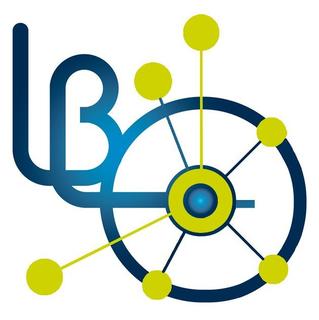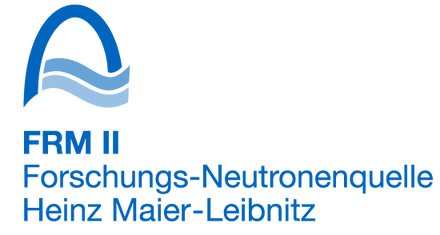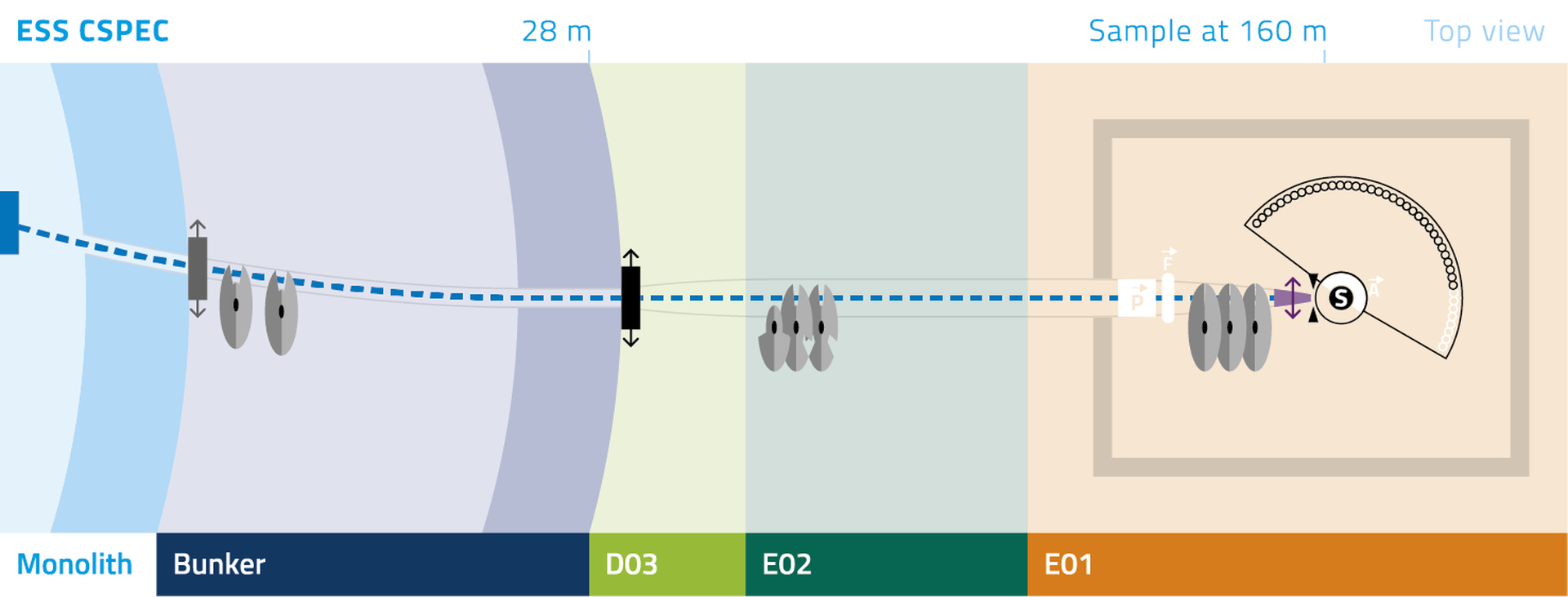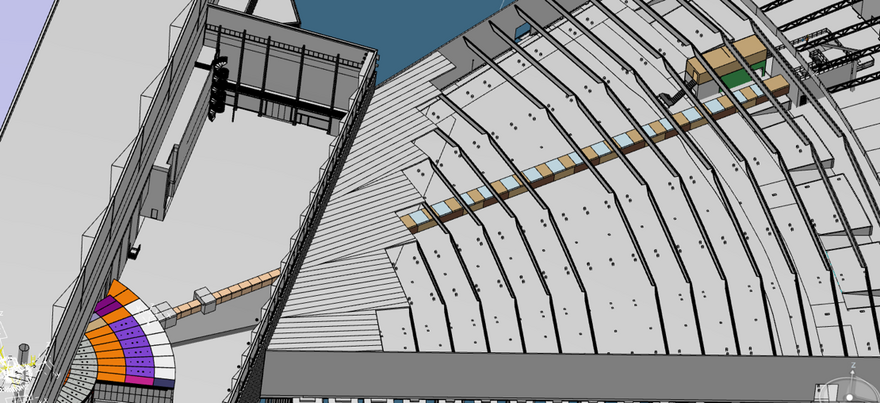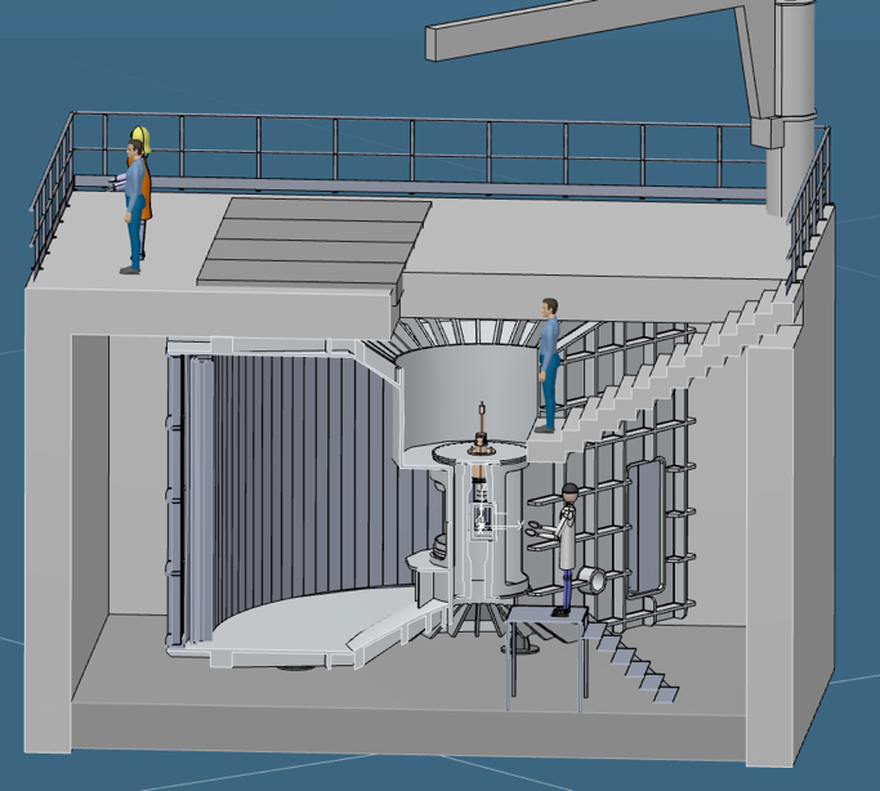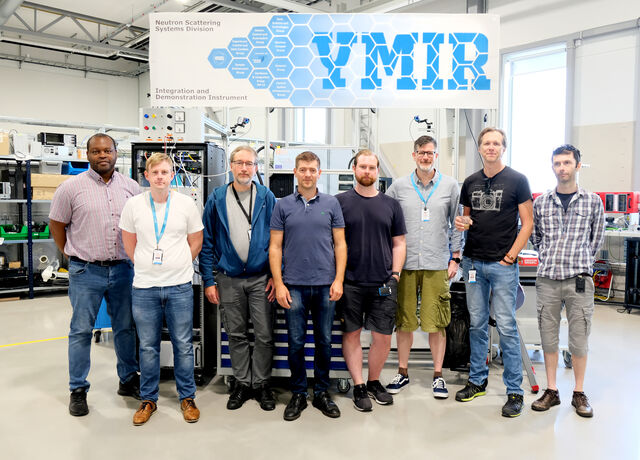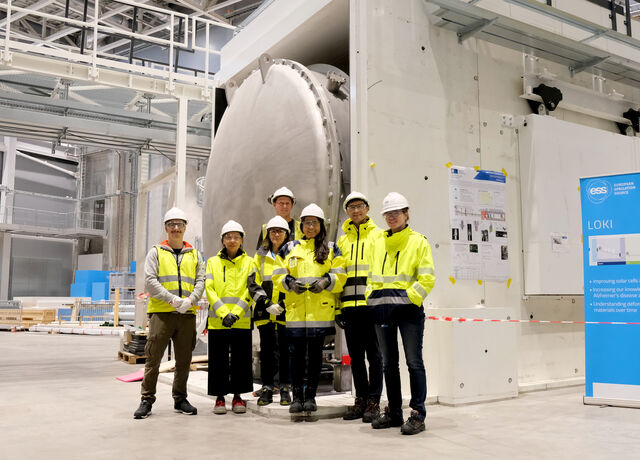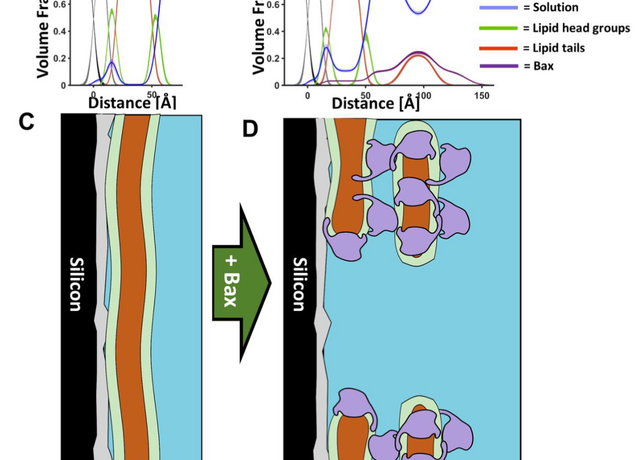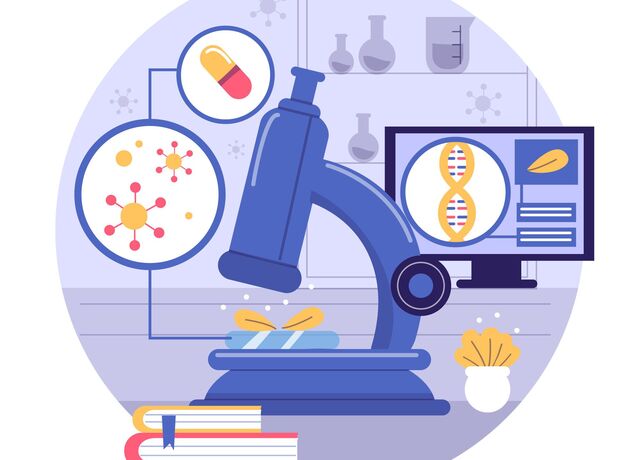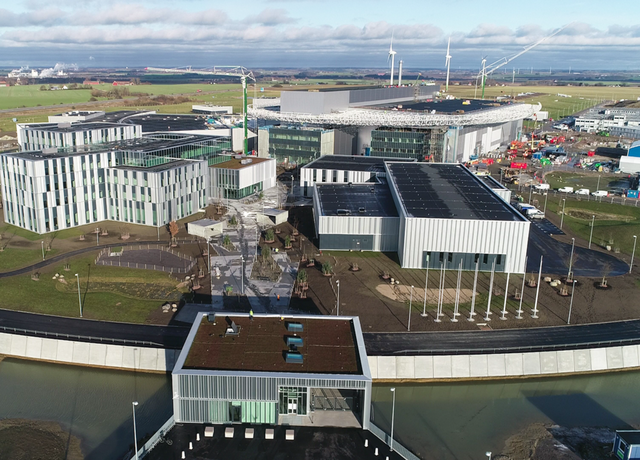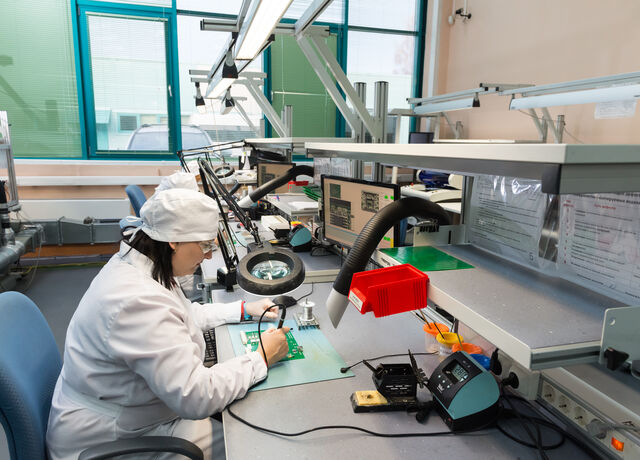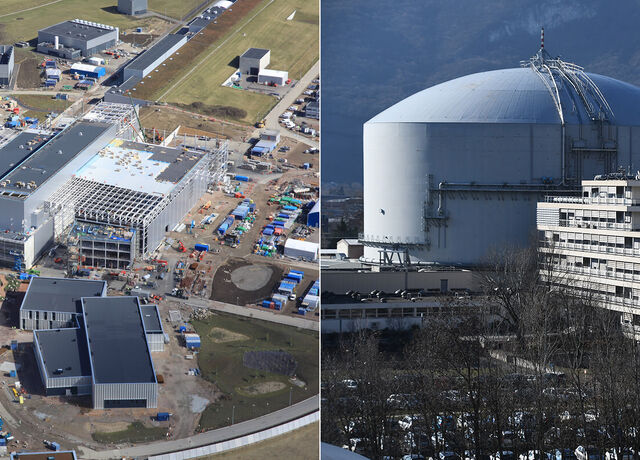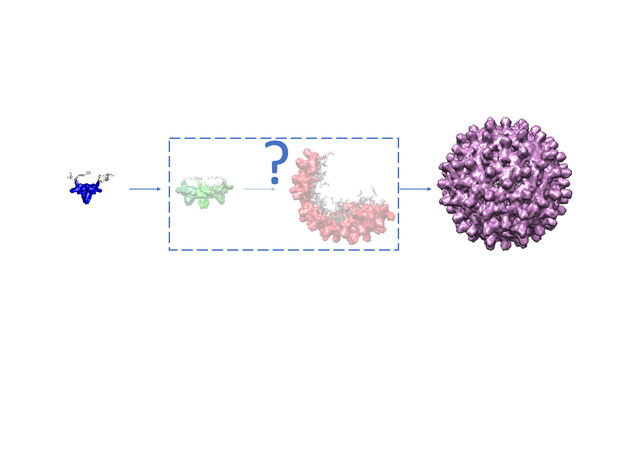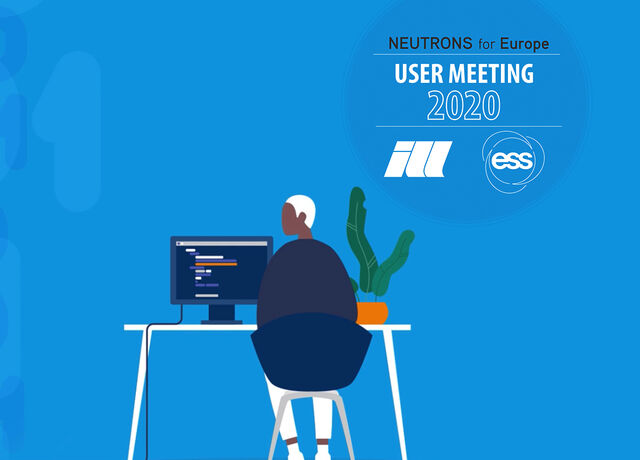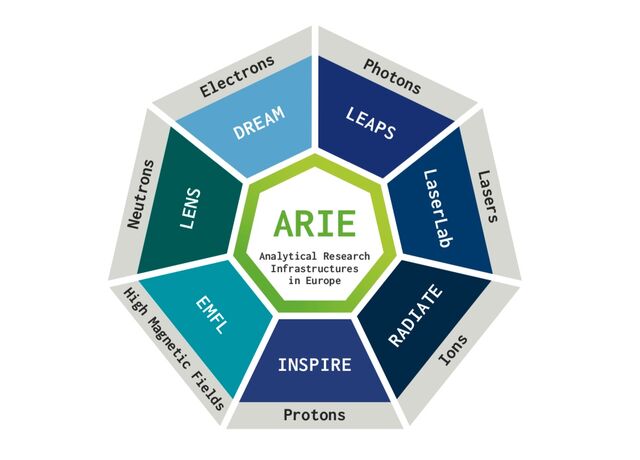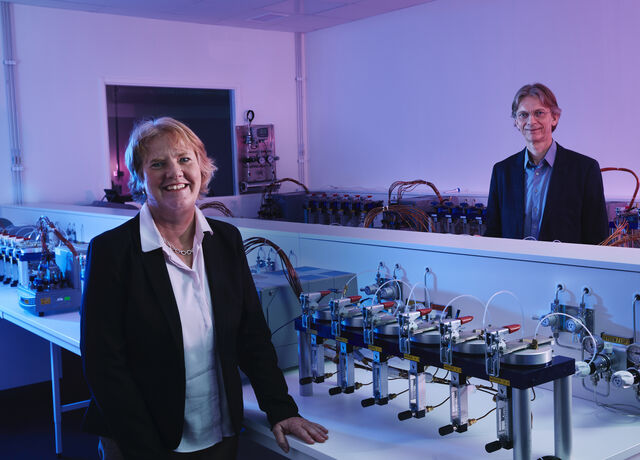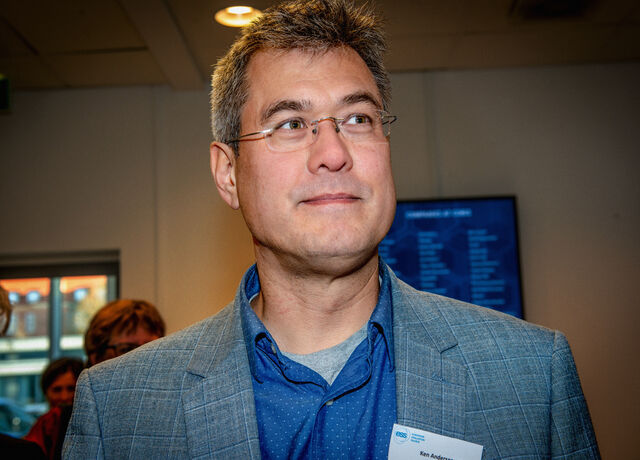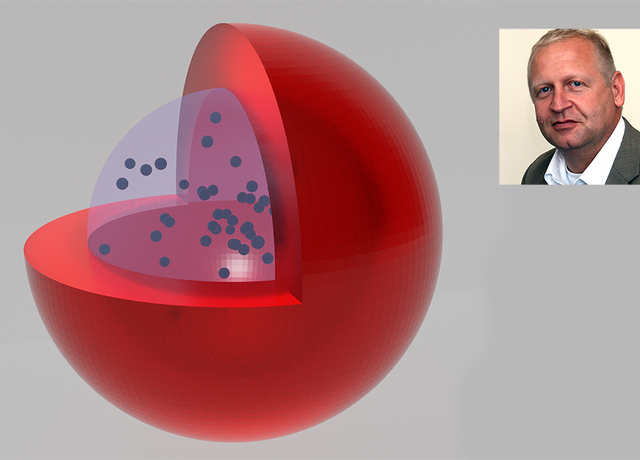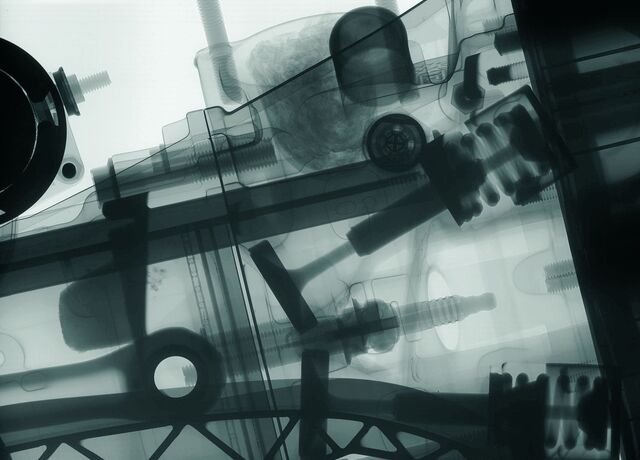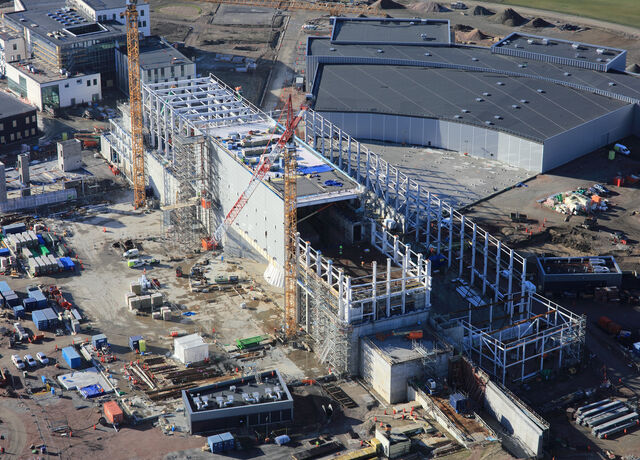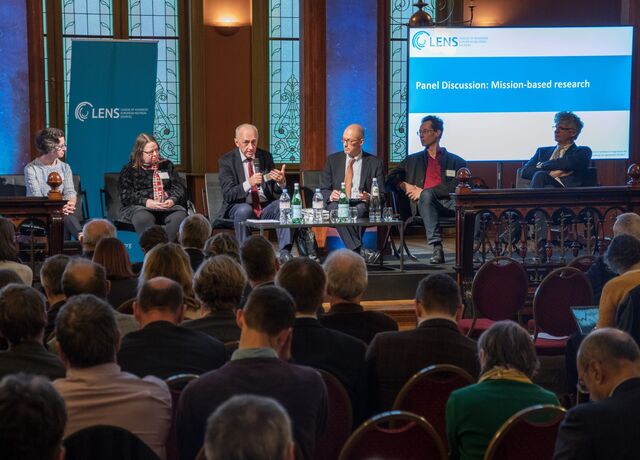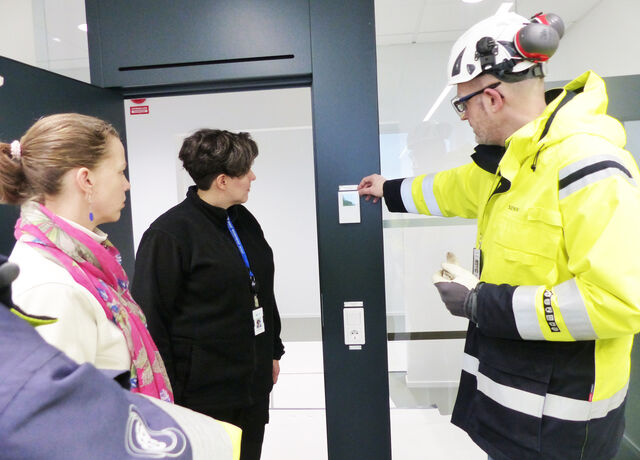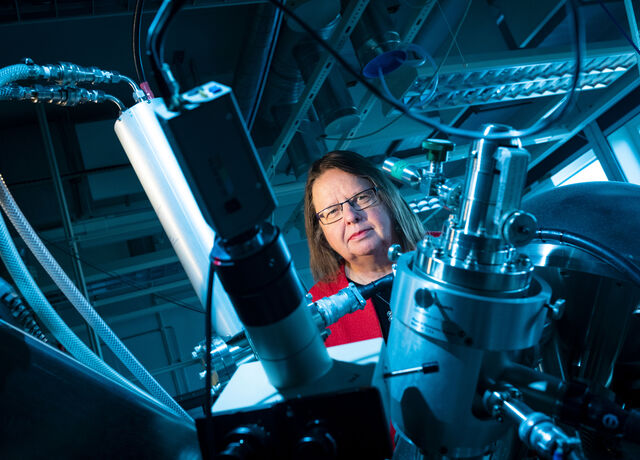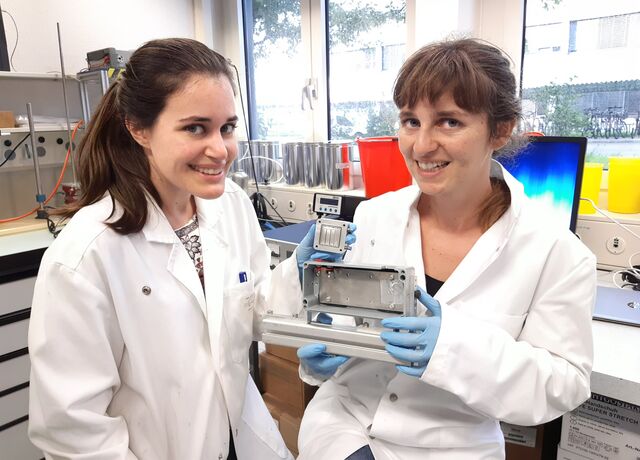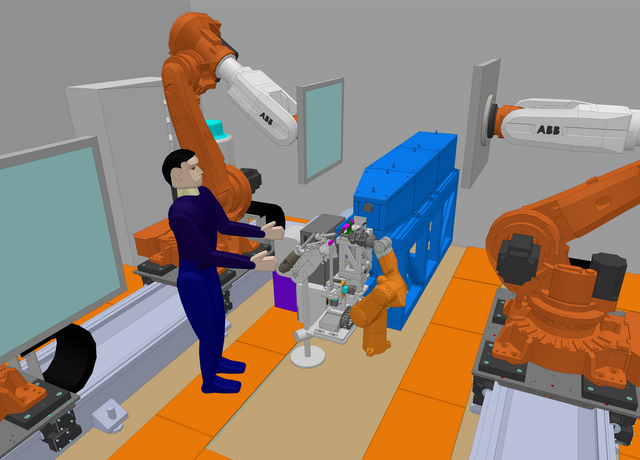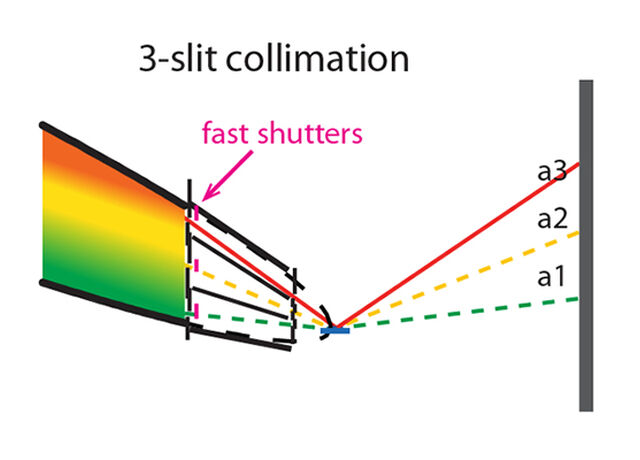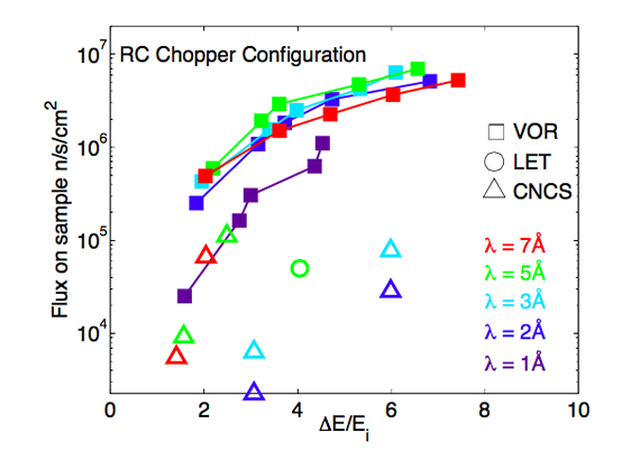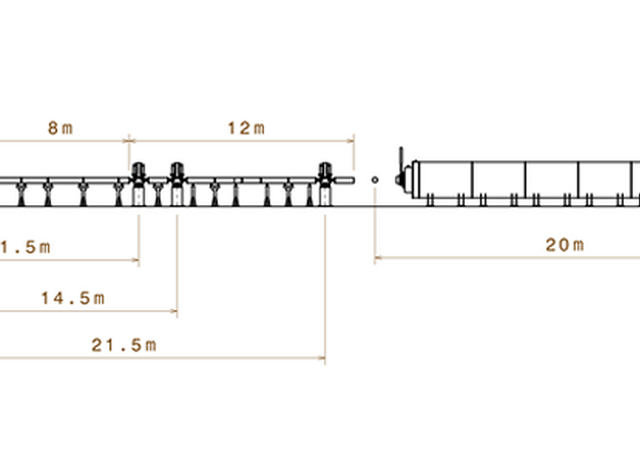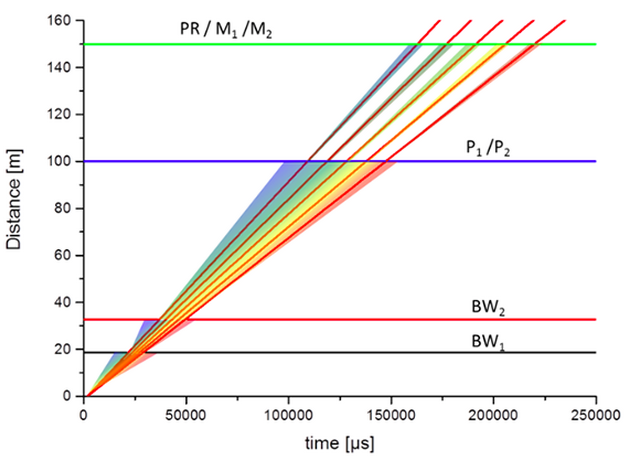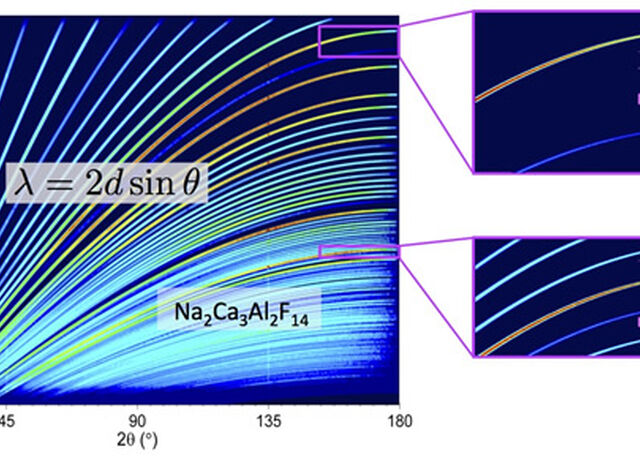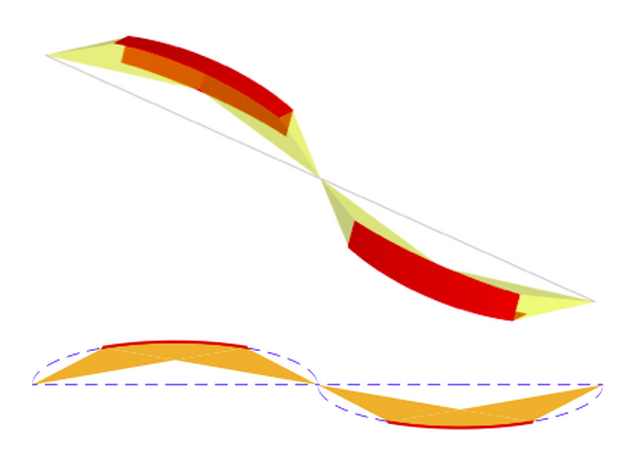CSPEC
Cold Chopper Spectrometer
CSPEC will used in a wide variety of scientific applications, spanning the life sciences, functional materials and chemistry. Its key capability is to follow kinetic events in situ or in operando, enabled by very high flux.
CSPEC is a direct geometry time of flight spectrometer developed as a German/French collaboration between FRM II and LLB. While both institutions are strong in soft matter and biophysics research, LLB additionally focuses on physical chemistry, magnetism, superconductivity, and structural and phase transition studies. FRM II specializes in materials science, structure research, quantum phenomena, nuclear and particle physics, and neutron methods. The result of this partnership is a workhorse spectrometer that will deliver results for both an academic and industrial user base.
CSPEC will deliver a high cold neutron flux across a wavelength band of 1.72 Å at the sample, positioned 160 m from the ESS target. The high brilliance of the ESS in conjunction with the long distance of the sample from the moderator will result in a cold time of flight spectrometer that will outperform all other spectrometers of its kind in the world, thereby leading to new scientific capabilities and possibilities that are currently not accessible due to flux limitation.
Instrument Class
Beam Port
Lead Scientist
Lead Engineer
CSPEC will be used in a wide variety of scientific disciplines focusing on, for example, functional and battery materials, quantum materials that may lead to spintronic applications and biological macromolecules.
Its key capability is to follow kinetic events in situ or in operando, enabled by very high flux. It will probe the structures, dynamics, and functionality of large hierarchical systems as they change or operate. Hierarchical systems include liquids, colloids, polymers, foams, gels, and granular and biological materials as well as the ever complex low-energy dynamics of energy materials and emergent magnetic behaviour. As we probe the dynamics of these systems, we unlock the principles that steer the organization of atoms into complex matter, and we can develop and improve functional materials for solving societal challenges.
The instrument length is 160 m from moderator to sample. The CSPEC guide will view the coldest part of the moderator with neutrons guided using a s-shaped curved guide that removes the direct field of view from the sample to the moderator thus eliminating the possibility of spurious high energy particles reaching the sample.
The wavelength bandwidth, Δλ = 1.72 Å, of the instrument is defined using bandwidth choppers at 15 and 20 m while the monochromatic pulses are defined using the pulse shaping and monochromating choppers positioned at approximately 105.6 and 158.5 m from the moderator. Finally, the monochromatic pulses are well separated in time using a repetition rate multiplication chopper close to the monochromatic chopper that separates each ESS time period, 71 ms, into 10 – 15 incident pulses on the sample.
The final guide piece can be chosen by the user to provide flux on a large sample area, 4 x 2 cm2, or a focussed sample area, 1 x 1 cm2. The scattering from the sample will pass through a radial oscillating collimator and reach a B10 multigrid detector, 3.5 m from the sample, with a scattering angle of 170o in the equatorial plane and ±26.5o vertical coverage.
Sample Environment
The design of the CSPEC sample environment pot will provide an optimised facility to perform experiments ranging from in-operando studies of electrolytes, pump-probe experiments on photosensitive materials, and the investigation of small samples in extreme sample environments.
Lead Scientist
Pascale Deen, ESS
Lead Engineer
J. Guyon Le Bouffy, Laboratoire Léon Brillouin (LLB)
Scientific Coordinators
W. Lohstroh, FRM II, Technical University of Munich
S. Longeville, Laboratoire Léon Brillouin (LLB)


























